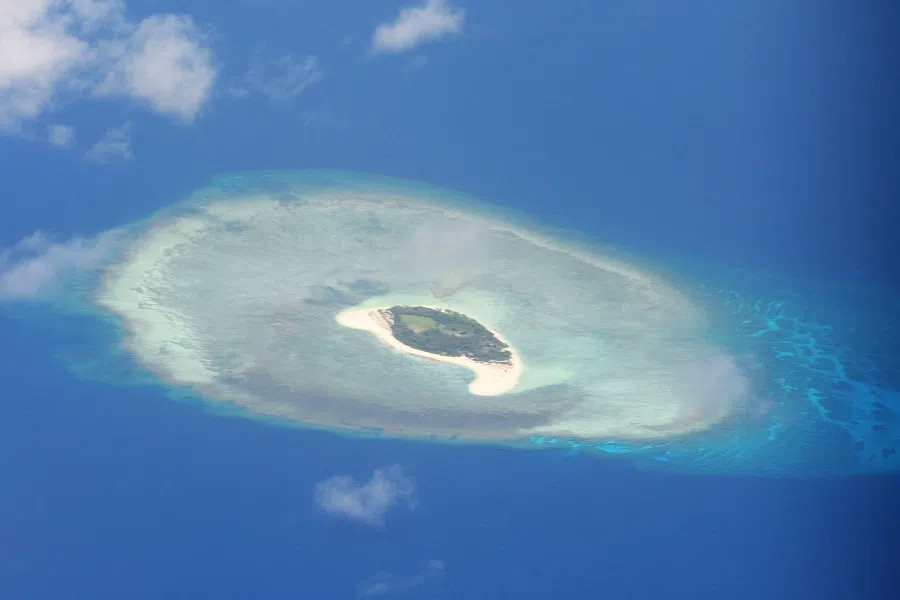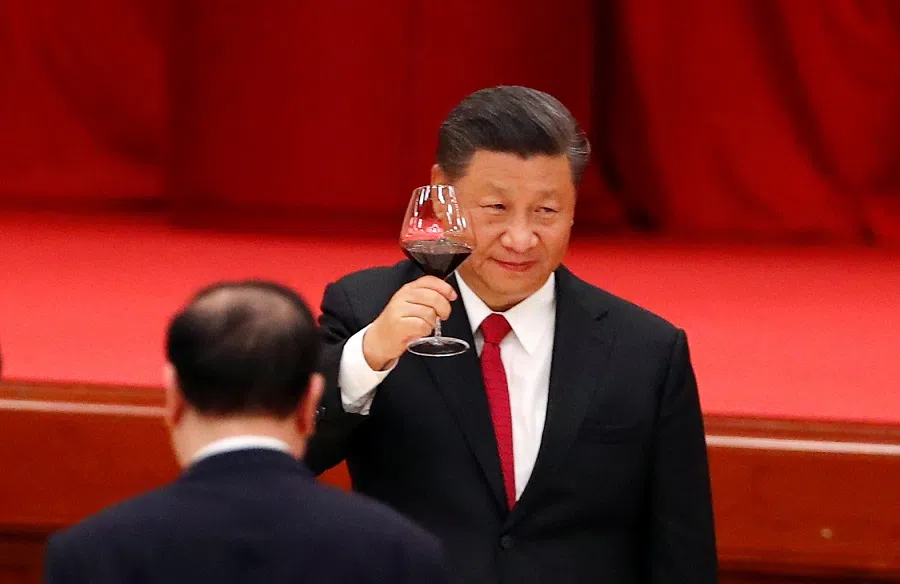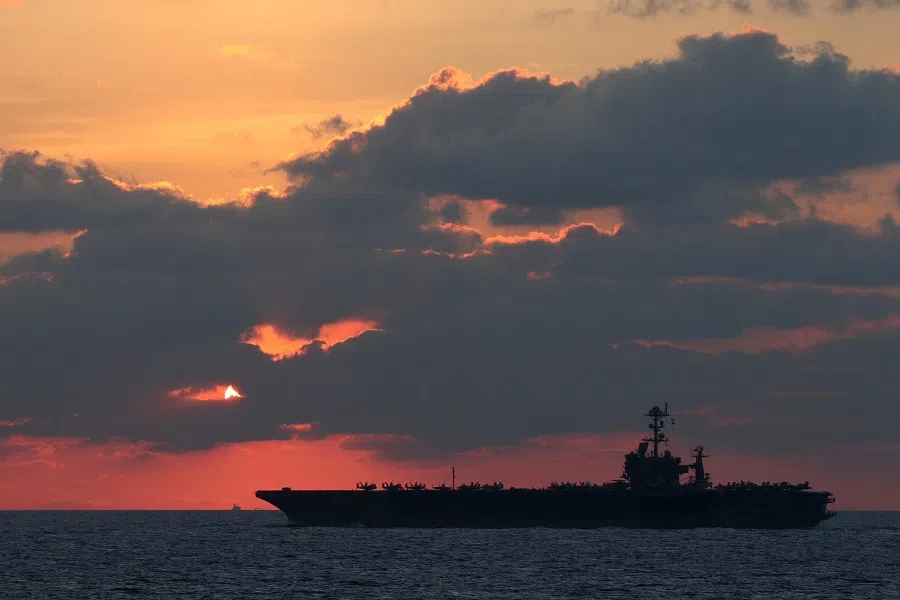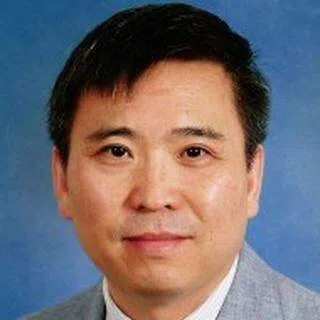What has changed in China's South China Sea policy under Xi Jinping?
Li Nan sees that China has been using more aggressive "defensive" strategies in the South China Sea (SCS) under Xi Jinping, which includes the building of several artificial islands and the consolidation of administrative control of Chinese possessions and claims in the SCS. While policy insiders in China often see these actions as defensive, those who have a stake in the SCS have cause to disagree.

China's South China Sea (SCS) policy has been described as becoming more assertive after Xi Jinping became China's top leader in November 2012. The extent of this assertiveness can be ascertained by examining what has and has not changed in China's SCS policy after Xi came to power.
Things that have not changed under Xi
China's control of a number of land features in the SCS has not changed. They include the entire Paracels; the reefs in the Spratlys including Subi, Gaven, Hughes, Johnson South, Fiery Cross, Cuarteron and Mischief Reefs; and the Scarborough Shoal of the Macclesfield Bank.
China's claims, including over those that China does not control, have not changed. China claims "territorial sovereignty" over the major land features of the SCS, including the Paracels, the Macclesfield Bank, the Pratas and the Spratlys. China also claims "internal waters, territorial sea and contiguous zone" that these land features may generate.
Moreover, China claims "maritime rights and interests" in the SCS, including "exclusive economic zone and continental shelf" based on the land features it controls or claims. It also claims "historic rights" in the SCS, which clearly refers to the rights within the nine-dash line that it inherited from the government in Taiwan after 1949. These "rights and interests", however, are more limited than "territorial sovereignty"; they refer largely to jurisdiction over maritime economic resources such as fish and oil and gas, including those within the nine-dash line.

Claims may reflect policy assertiveness and be used to mobilise domestic support for such policy, but they may also serve as levers in negotiations to settle territorial disputes. China used such levers to settle territorial disputes with Burma (now Myanmar), Russia, Vietnam and the central Asian countries.
What has changed in China's SCS policy under Xi?
China embarked on a massive project to reclaim land on the reefs it controls in the Spratlys in 2013. The project transformed these reefs, which remained tiny and barely above water in low tide, into major artificial islands; the total reclaimed land amounts to more than 10 km2. Subi Reef, for instance, was expanded to 4 km2 and Fiery Cross Reef to 2.83 km2. Mischief Reef was enlarged to 5.52 km2. In comparison, the natural size of Ito Aba, the biggest island in the Spratlys, is only about 0.51 km2. Finally, Woody Island, the biggest island of the Paracels, was expanded from 2.13 km2 to 3.16 km2.
The enlarged land mass also enables deployment of a large military force; 3,330 People's Liberation Army (PLA) troops reportedly are stationed on Subi Reef alone.
The massive land reclamation resulted in an enlarged land mass that can sustain the building of major airfields, deep-water harbours and surveillance and communications facilities. Three airfields with 3,000-metre runways and aircraft hangars were built on the Subi, Fiery Cross and Mischief Reefs of the Spratlys respectively; they can accommodate deployment and operation of heavy transports and aerial-refuelling and surveillance aircraft as well as bombers and fighter jets. The harbours of Fiery Cross Reef and Woody Island can service 5,000-ton ships. The enlarged land mass also enables deployment of a large military force; 3,330 People's Liberation Army (PLA) troops reportedly are stationed on Subi Reef alone.
Another policy change under Xi is consolidating administrative control of Chinese possessions and claims in the SCS. China established two county-level administrative districts or Xisha and Nansha districts in April 2020, to run the disputed Paracels, Spratlys and Macclesfield Bank. Meanwhile, China's Ministry of Civil Affairs and Ministry of Natural Resources gave "standard names" to the features in the SCS, including 25 shoals and reefs and 55 undersea oceanic mountains and ridges. This is clearly an attempt to consolidate the authority of the two administrative districts by fleshing out their specific jurisdictions.
Two other policy changes under Xi may have critical implications for China's SCS policy. The post-2015 restructuring of the PLA led to establishment of the PLA Southern Theatre. Commanded by a naval officer who exercises operational command and control of the naval, air, conventional missile and army forces deployed to the region, this theatre is generally understood as a strategic and operational arena that is predominantly maritime; it reportedly is dedicated to safeguarding what China perceives to be its "territorial sovereignty" and "rights and interests" in the SCS.
Any coast guard operations in the SCS thus may now be coordinated by this PLA theatre command.

Xi also integrated China's maritime law enforcement agencies. Traditionally dispersed under five different ministries, they included China Marine Surveillance (CMS) of Ministry of Land and Resources, China Fishery Law Enforcement Command (FLEC) of Ministry of Agriculture, the Coast Guard Force of the People's Armed Police (PAP), the Maritime Anti-Smuggling Police of China Customs, and the Maritime Safety Administration (MSA) of Ministry of Transportation.
The multiplication of these agencies led to redundancy and waste of resources and policy blunders for lack of central coordination. In 2013, CMS, FLEC, PAP Coast Guard Force and the Maritime Anti-Smuggling Police were merged and placed under the command of the newly established China Coast Guard (CCG). In 2018, CCG became an armed branch of the PAP; CCG thus became completely para-militarised in 2018.
Hu [Jintao] is known for his caution-driven, hands-off and conflict-avoidance personality in handling policy issues. In comparison, Xi is more hands-on and not afraid of conflict.
This reorganisation led to the establishment of the CCG South Sea Area Command, which has six coast guard flotillas and one aviation group under its command. As the PAP was integrated into the command and control structure of the PLA in 2018, this CCG command is likely to be integrated into the PLA Southern Theatre chain of command. Any coast guard operations in the SCS thus may now be coordinated by this PLA theatre command.
Accounting for policy changes under Xi
Building artificial islands clearly reflects the institutional preferences of the PLA; it helps to "gain initiative" for the PLA in reducing the vulnerability of the Chinese-controlled reefs, and in enhancing PLA infrastructure, surveillance and logistical capabilities for securing the vital sea lanes and "choke points" of the SCS and the "bastions" for its strategic nuclear submarine force operating in the SCS. But since the PLA had a strategic interest in the SCS even before Xi came to power in 2012 and Hu Jintao did not endorse the PLA plan, the change of top leadership and the associated personality differences may account for different policy choices.
Hu is known for his caution-driven, hands-off and conflict-avoidance personality in handling policy issues. In comparison, Xi is more hands-on and not afraid of conflict. As the new top leader, Xi was also incentivised to consolidate power by currying favour with the PLA, or do what the PLA wants including building islands in the SCS.
... Xi is more uncompromising in handling China's territorial disputes likely because of his strong personal belief in the sanctity of sovereignty

Finally, Xi is more uncompromising in handling China's territorial disputes likely because of his strong personal belief in the sanctity of sovereignty, as reflected in his regular warnings that "no country should expect the Chinese people to swallow the bitter fruit that is harmful to our sovereignty". This is in contrast to Jiang Zemin who made major concessions in settling China's territorial disputes with its neighbours.
Availability of critical technologies is another explanatory factor. The most important contractor in building the SCS islands is China Communications Construction Group (CCCG), which specialises in developing China's infrastructure including its deep-water harbours. CCCG owns Sky Whaler, the gigantic self-propelled cutter-suction dredger. Based on German technologies and launched in 2010, Sky Whaler played a critical role in building islands in the SCS.
External factors also play a critical role in driving China's SCS policy changes. Some believe that Xi exploited President Obama's weak SCS policy to build artificial islands during 2013-2015. Others claim that China exploited distraction of the US and some Asian governments in combating Covid-19 by establishing two administrative districts and naming 80 features of the SCS in April 2020.

An underlying logic of this view is that had the US adopted a tougher policy, China would have moderated its behaviour. The US government declared China a strategic competitor against the US after Donald Trump became president in 2017. US State Secretary Mike Pompeo expressed support for the 2016 Hague tribunal arbitration and declared China's SCS claims "unlawful" In July 2020; the US Navy deployed two aircraft carriers to the SCS to conduct 'dual-carrier" operations. However, instead of moderating its behaviour, China responded by increasing its military exercises and shooting anti-ship ballistic missiles into the SCS.
Some of China's capabilities deployed to the SCS, however, are for offence; China's posture may also be perceived to be offensive. China may also reflect on its own policy behaviour as a source of tension.
Rather than seeing China as the provocateur, most analysts inside China see China as the victim of US-led threats to its interests in the SCS. They believe that these external threats drive China's SCS policy changes; since the US and some Asian countries exploit China's vulnerability for advantages in the SCS, China's policy changes serve the purpose of "defence".
Some of China's capabilities deployed to the SCS, however, are for offence; China's posture may also be perceived to be offensive. China may also reflect on its own policy behaviour as a source of tension. Its nine-dash line claim lacks the legal basis in international law; the overlap of this claim and the EEZ claims of the coastal states is a major source of tension. At the minimum, China's island-building policy also disrupted the status quo in the SCS.
Related: Should China station fighter jets in the South China Sea? | Could China-US tensions in the South China Sea escalate into a hot war? | Chinese academic: Why the PLA conducts simultaneous exercises across different territorial waters | Chinese military starts 79-day exercises amid pandemic to deter Taiwan and warn the US

![[Big read] Paying for pleasure: Chinese women indulge in handsome male hosts](https://cassette.sphdigital.com.sg/image/thinkchina/c2cf352c4d2ed7e9531e3525a2bd965a52dc4e85ccc026bc16515baab02389ab)


![[Big read] How UOB’s Wee Ee Cheong masters the long game](https://cassette.sphdigital.com.sg/image/thinkchina/1da0b19a41e4358790304b9f3e83f9596de84096a490ca05b36f58134ae9e8f1)
